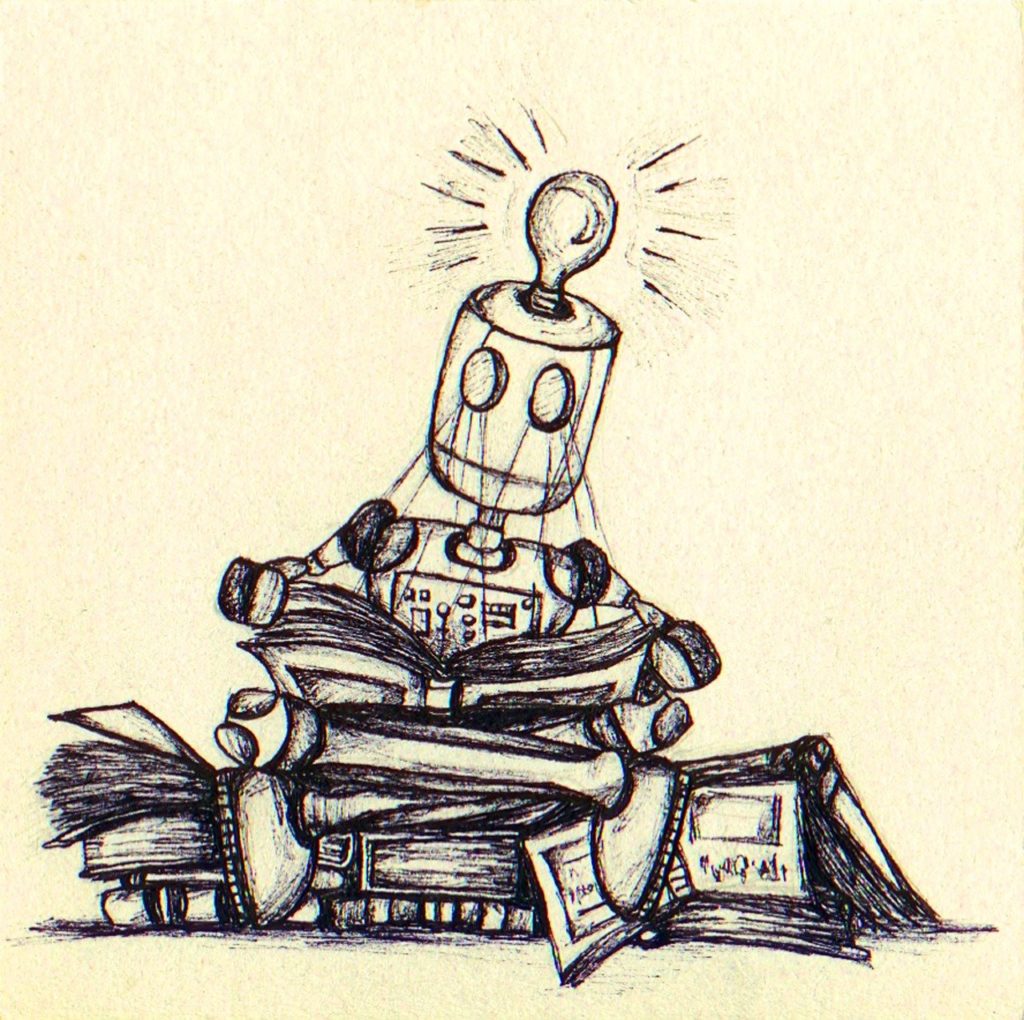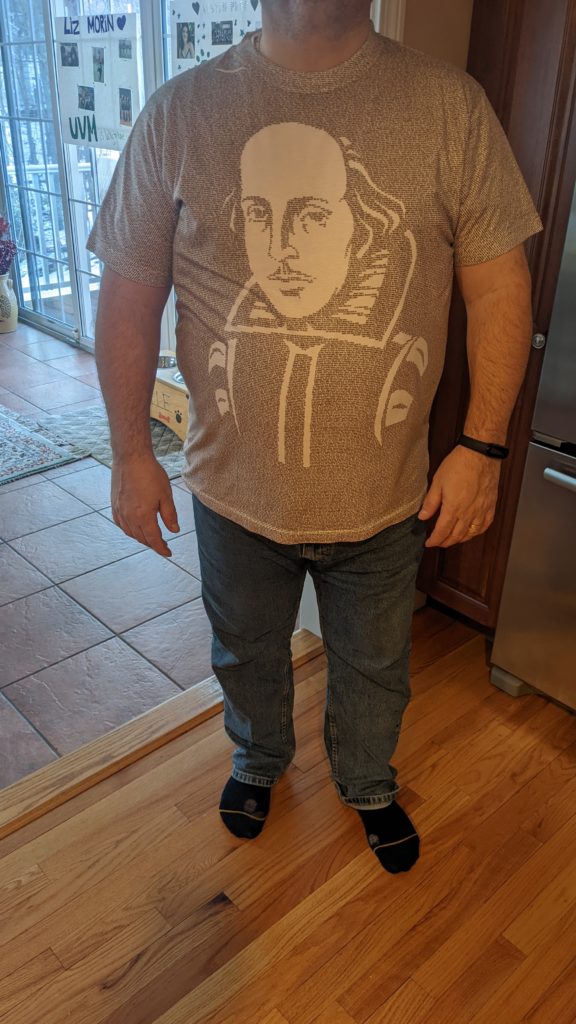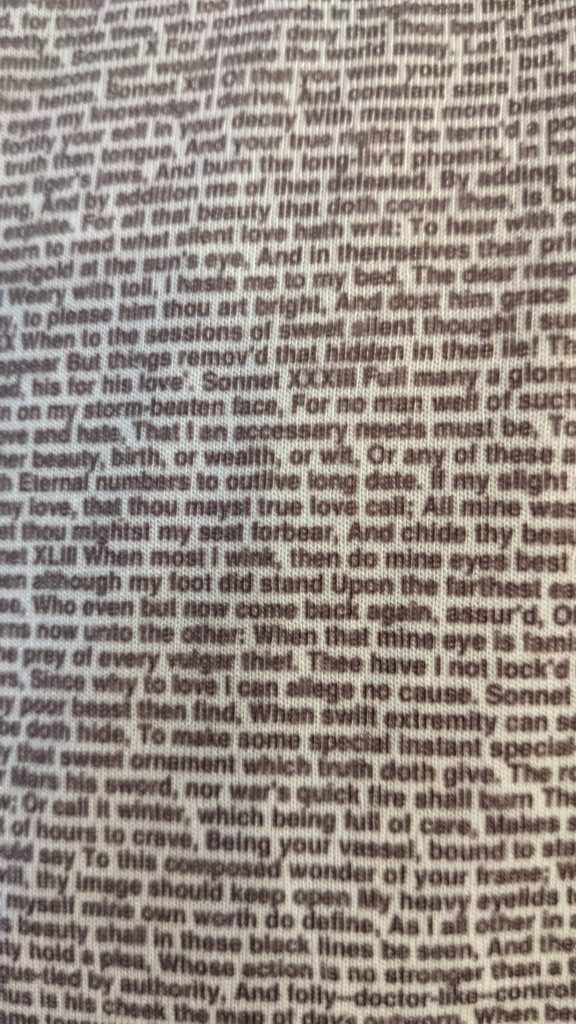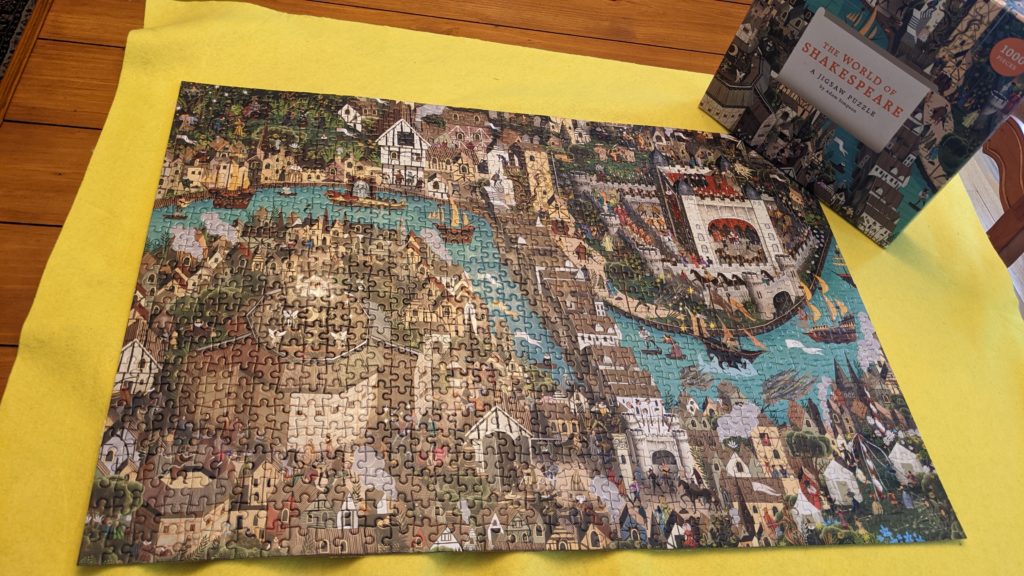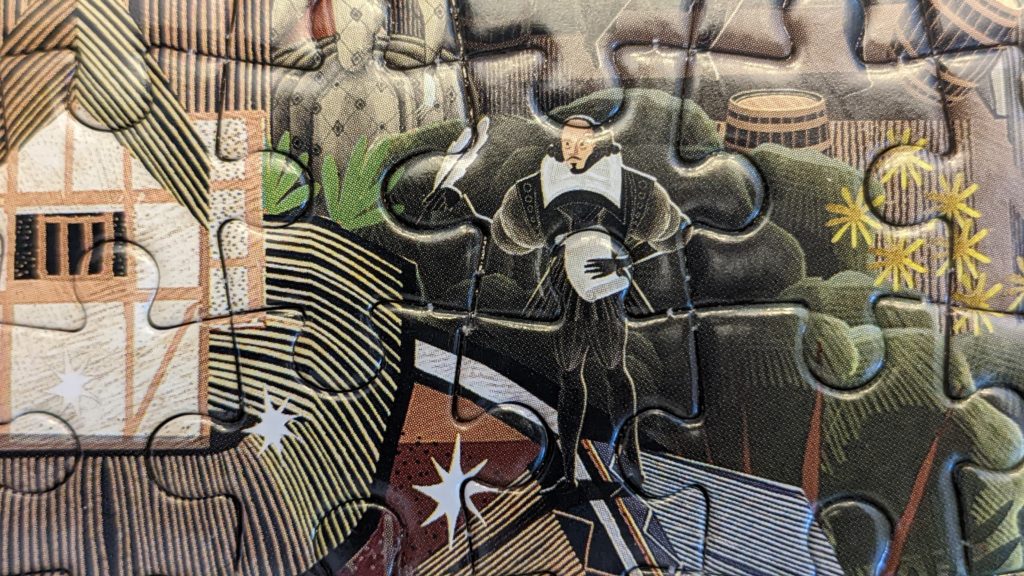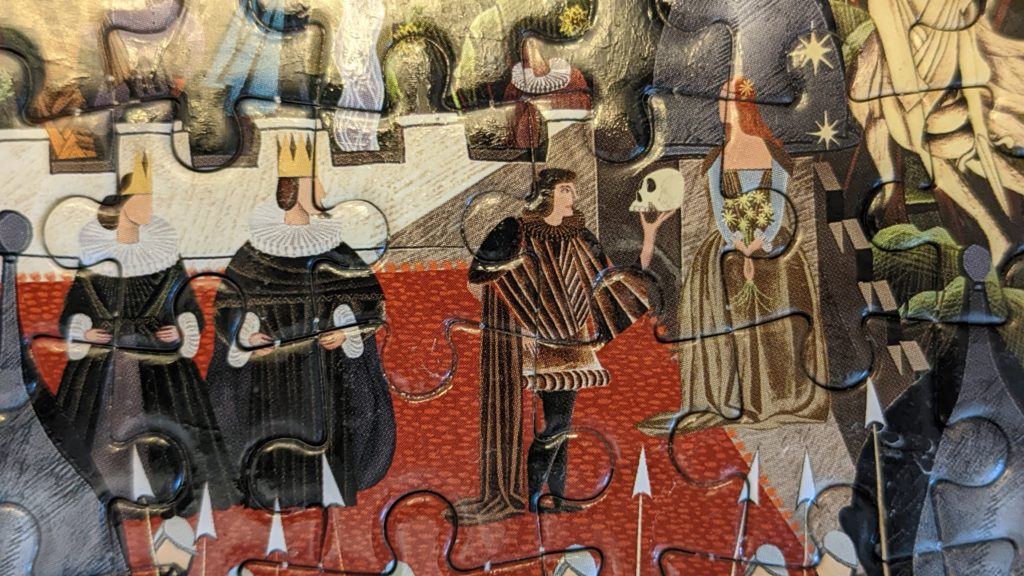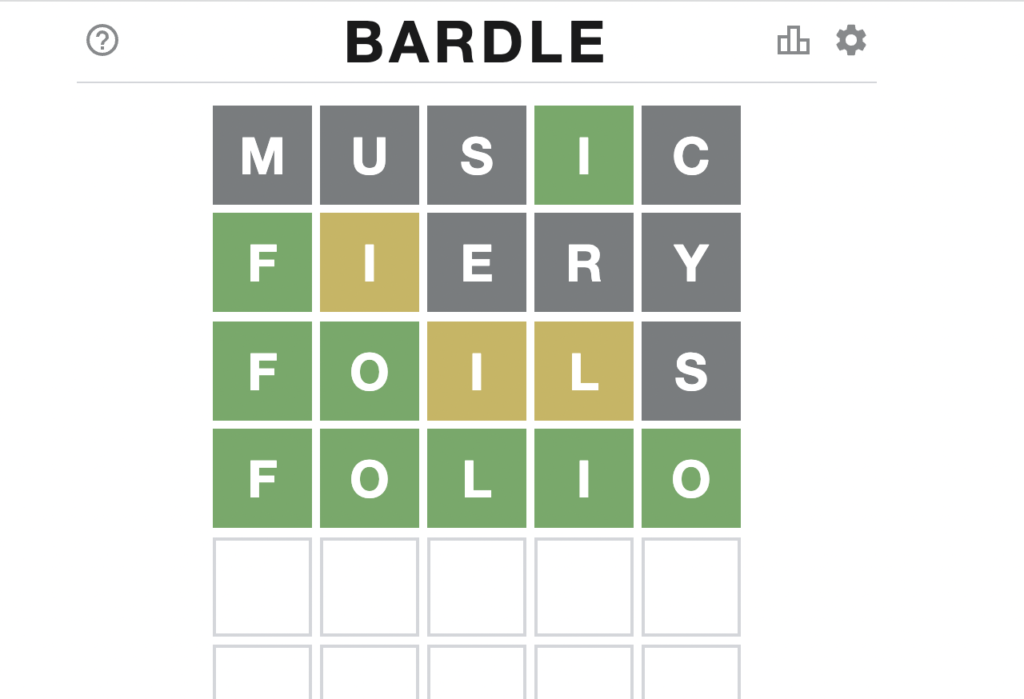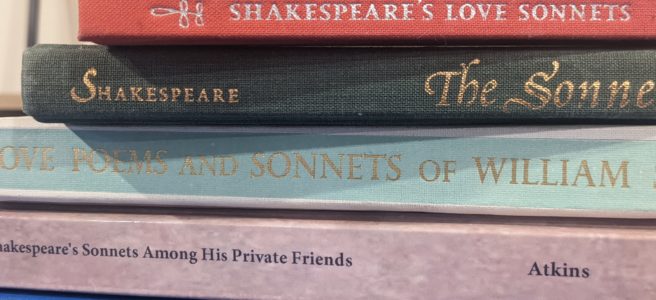Who’s got a new Shakespeare present? This guy!
For Valentine’s Day this year (I know, I’m late with the post) my wife completely surprised me with a Shakespeare present. I’m very excited about this, because usually I have some clue. Either she or the kids hints around, asking for a reminder about what Shakespeare merchandise I already have. This time she went entirely on her own, and was very excited for me to unwrap it.
It’s actually a very comfortable t-shirt. I’m not terribly comfortable in t-shirts that accentuate how much I don’t go to the gym, if you know what I’m saying. But I like the material for this one. Different than the usual “I hope that’s extra big because you know it’s going to shrink in the fryer” cotton blend that makes the above problem that much worse.
If you can’t tell from the above, the shirt’s artwork is made from the text of Shakespeare’s work. In this case, the sonnets. The text is very small, not the kind of thing that a stranger could come up and read on you. But we know what it is, and you can see it clearly when you look close. It is multiple copies of all the sonnets, all strung together.
I have several pieces of “art made from the text” merchandise that I have acquired over the years. One is a portrait of Shakespeare made from the text of the complete works. One is a “one page poster” of King Lear, and one of The Tempest. But those things are all on the walls of my house and only people that come to my house can enjoy them (my daughter’s friends, in particular, notice and comment on them, which is cool). But something wearable is my first chance to actually take the show on the road.
Nothing New Under The Sun
Ok, ready for the story? I’ve been doing this a long time, as loyal readers know. So when my wife asked, “Have you ever heard of this company?” I actually had. In fact, I’ve posted about them. And I got curious about why I didn’t already have their merchandise!
The company in question is called Litograph, and I wrote about them back in 2015!
I brought up the site and we started browsing through all of their other merchandise. My wife was actually quite annoyed that their search engine had failed for her, and she’d gotten me the sonnets because it was the only Shakespeare product she saw (they have lots of classic literature, not just Shakespeare). That’s ok, though, I still love it. I learned later that our bad @Bardfilm has their Hamlet shirt. My wife asks which one is my favorite, I tell her their Tempest shirt with Ariel and the storm.
Still, I was trying to remember why I hadn’t taken the opportunity to get myself a shirt, even when I was offering a discount! I scanned my emails and turned up the original conversation I had with them way back in 2015. First thought, I am nothing if not consistent:
Can I tell you something? It’s 10:30pm on Sunday night and I’m here agonizing over your shirts. Which play should I pick? I want the Tempest, but I’m disappointed that the cut of the t-shirt really loses the whole “Ariel around the ship” effect that you get in the poster. But I’m ok with that. The Tempest shirt still has the best front/back combo.
Seven years, my favorite still hasn’t changed. But man, how picky am I?
Here’s the funny thing, though. That I had forgotten all about. I found a mistake. And I was not having it.
I sit here clicking each color, checking the back, trying to decide on a combination I like.
At some point I hit “Zoom” on the picture, trying to determine what the second color is, and I see it….the PROJECT GUTENBERG DISCLAIMER TEXT is right there in the middle of the image.
Deal breaker. I don’t know what happened there, whether you know it’s there and it doesn’t bother you or you had no idea it’s in there, but there’s no way I could buy that. Knowing it’s there, and waiting for people to notice it, would drive me crazy.
Wow, I was a tough critic when I was younger! I get exactly what I was saying, though. I can tell you that my “love quote” Shakespeare pillow has a misquote on it. Heck, the bracelet I had custom-made for my wife, adorned with Shakespeare quotes, ended up with a typo. I don’t miss those things. So I completely understand why I didn’t buy a shirt at the time, I would never have been able to wear it without thinking the whole world could see the same mistake I could.
But! In fairness to the company, I will say that my wife and I have scanned my shirt as meticulously as our old eyes will allow, and we don’t see a similar mistake. I never did get a response to that email, but I like to think that over the last seven years maybe they took the opportunity to fix it…. but you know what? I’m still not going to take the chance ;). I hear the Hamlet shirt’s pretty good.
